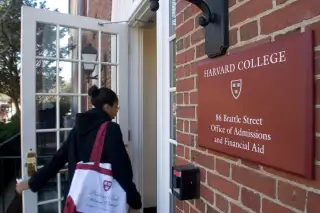The 28 Best Colleges for Need-Based Financial Aid

More than 140 colleges in the U.S. claim to provide enough grants to meet at least 90% of the “demonstrated financial need” of their undergraduates.
But each school decides for itself what a student's “demonstrated financial need” is. Some of the schools have comparatively stingy definitions, and as a result, their students graduate with high debt loads.
Money crunched a variety of numbers, including colleges’ need-based aid budgets, the debt loads of their graduates, and the average net prices they charge low-income students to find the schools that appear to have the most generous need-based financial aid.
One reason many of these schools offer a lot of aid is that they are expensive to begin with. They also tend to be highly competitive to get into, so they aren't for everyone.
That's why we also slice the data in other ways. For example, you may want to consult our latest list of The 50 Most Affordable Private Colleges, all of which have lower than average tuition, generous financial aid, or a combination of the two. Our list of The 50 Best Public Colleges features many affordable schools, especially for in-state residents.
And students from families earning less than $48,000 a year will also want to check out Money’s free Affordable College Finder, for schools that are likely to admit them and provide enough aid so they can graduate without burdensome student loans.
To make our list, each of these schools had to pass Money’s basic quality screens, such as having solid graduation rates. Then, we focused on schools that claim to meet at least 90% of students’ financial needs, and to meet 100% of the need of at least 90% of students. We then eliminated any school that reported charging low-income students (those from families indicating an income of less than $30,000 on the federal forms) an average net price of more than $9,000 a year. We also eliminated schools whose graduates had average debt loads of more than $27,000.
All of these schools' aid programs appear to be generous, so we simply ordered the list by Money's overall college ranking.
| College | Overall Money rank | Average price for low income students after grant aid | Average student debt load at graduation |
|---|---|---|---|
| Princeton University | 1 | $3,630 | $6,810 |
| Harvard University | 3 | $2,473 | $6,000 |
| Rice University | 4 | $6,468 | $8,413 |
| Amherst College | 7 | $3,700 | $11,186 |
| Massachusetts Institute of Technology | 11 | $5,128 | $13,645 |
| Yale University | 12 | $3,918 | $12,000 |
| Pomona College | 22 | $5,807 | $8,600 |
| California Institute of Technology | 24 | $6,696 | $18,349 |
| University of Pennsylvania | 26 | $7,636 | $21,500 |
| Vanderbilt University | 27 | $6,905 | $13,750 |
| Washington and Lee University | 29 | $353 | $19,500 |
| Brown University | 31 | $3,186 | $16,000 |
| Dartmouth College | 33 | $7,529 | $11,625 |
| Duke University | 39 | $8,777 | $6,500 |
| Hamilton College | 40 | $4,573 | $16,500 |
| Bowdoin College | 43 | $5,925 | $19,500 |
| Davidson College | 46 | $8,289 | $16,663 |
| Middlebury College | 48 | $4,904 | $19,500 |
| Williams College | 49 | $3,127 | $12,005 |
| Bates College | 61 | $7,426 | $17,058 |
| Wesleyan University | 68 | $6,009 | $18,633 |
| Colby College | 75 | $1,710 | $19,461 |
| Harvey Mudd College | 79 | $8,770 | $25,696 |
| University of Chicago | 83 | $8,964 | $18,625 |
| Union College | 98 | $8,682 | $26,278 |
| Swarthmore College | 100 | $8,537 | $19,000 |
| Grinnell College | 156 | $8,112 | $10,775 |
| Haverford College | 250 | $8,881 | $13,853 |